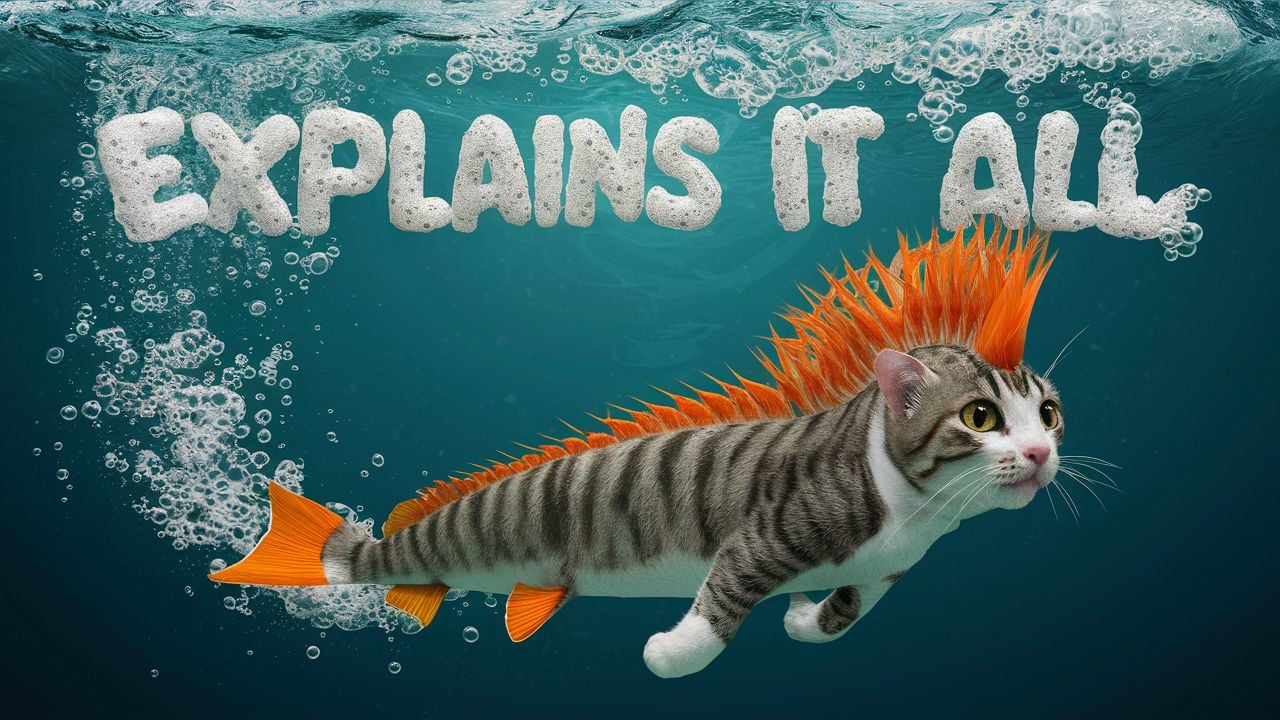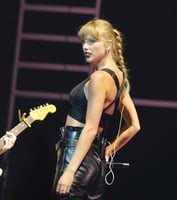Call It What You Want, Karlie [Speech Science]
3 November 2017 Call it What you Want lyric video:
White out under the “call it” seems sus…
True or false? When the masculine pronouns "he" or "his" appear, they are either circled in red or rewritten in red over lyrics someone has used white out on?
Not every flower is a daisy, but you be the judge on this comparison
The song stil makes sense either way because it’s saying call it what you want, call it, call it what you want. Or It’s saying call it what you want, Karlie, call it. And at the end of ‘but would you run away with me', the song is asking a would question (Karlie would you want to?)
IMO, the backup singers (and Taylor tbh) 100% sound like they are singing "Karlie" and not "call it."
This exercise is pretty ambiguous…
Let’s settle this with some Speech & Hearing Sciences!
Phonetics:
Phonetic spelling of “call” then “it” = k-AW-l + IT
Phonetic spelling of “Karlie” = K-AH-R-l-ee
Here’s how you write each in phonetics:
Call it =
Karlie =
You can use these symbols to follow along with the placements we’re about to go over
…Are you ready for it? We’re going to go through the tongue position and mouth for every sound in “call it” then for “Karlie” so we can try to ascertain if there’s a difference.
Remember, every speaker is an individual. There are gender differences, racial differences, dialectical differences, and variation in each person’s speech patterns.
Here’s how your tongue moves in call:
- “K” is made in the back of your mouth where your palate gets soft (velar)
- In the pic below it shows a color for each different section of your speech anatomy.
- The lips are red and produce sounds symbolized in the red arch above p/b/m/w and so on and so fourth for each position/color
- These are not letters but the phonetic symbols for the sound made. The words above the symbol is an example, Man is the /m/
- The lips are red and produce sounds symbolized in the red arch above p/b/m/w and so on and so fourth for each position/color
- In the pic below it shows a color for each different section of your speech anatomy.
- The next picture shows the vowel placements in the mouth.
- Toward the left of the pic shows the front of the mouth toward the lips and the right of the pic portrays the back of the mouth toward your uvula (the hangy-down thingy).
- The top of the pic shows top of the mouth and the bottom shows lower in the mouth.
- For “ah” the tongue has to move from the high and back velum area where the “k” sound was made
toward the front and a bit lower to hit the “ah” sound.
- ah is open/mid open mouth with a tongue just behind the central position (same in both call and kar).
- L sounds are called liquids, because like water, they sort of take on the shape of the word they’re in. The Ls take on characteristics from preceeding and following phoneme sounds. So the “llll” in “call” is going to be an “all” sound because of the vowel before it.
- “alll” sound is a short distance from the “ah” sound so the tongue can hit both spots pretty accurately
- Bare w/me this is an approximate schematic!
- 1 is the /k/ at the velum top/back of mouth down and center to “ah” then up/center to the “all”
Now the 2nd word “it”
- In the /I/ sound the tongue is more toward the front than central position and the mouth is mostly
closed
- The tongue must move forward and up from the “all” sound in “call” at the back of the alveolar
section.
- Lastly the “t” sound is at the front of the alveolar section of the mouth. So the tongue stays high in the mouth from “i” as in “bit” to travel up right behind the teeth to the “t” also as in “bit”.
- Here I’m trying to show the approximate tongue placements in entire sequence for “call it”
So Let’s compare what the mouth is doing in “call it” to the placements in “Karlie” in order to see if we can tell which word Taylor and her backers sing in Call It What You Want.
This is “Karlie” spelled in phonemes
- Same beginning “k” sound in the back
2.5 (we skipped #2 because the tongue moves past where #2 was in “call”
- The tongue still has to move forward and down to get the vowel sound.
2.75.
- The R sounds (called rhotics) are a bit like the Ls in that they can take on different characteristics depending on what sounds they are surrounded by.
- So the “ah” sort of blends with the “ruh” sound making an “are” sound (like a pirate).
- The tongue kind of hangs out in that similar central space in “ar”
- AND the tongue has to hit the low, forward position of the “ah” vowel,
- but then move back upward from where it came from (from the back alveolar k sound)
- to hit “arr” there between open-mid and closed-mid in the central position,
- It’s been a decade since school, so I forgot what the proper name for this next situation is, Economy of Motion, or something to that effect.
- The tongue saves energy by taking a shortcut or maybe hitting that arrr less precisely than it would in a different word.
- The tongue positions all start to blend together a little.
- It’s been a decade since school, so I forgot what the proper name for this next situation is, Economy of Motion, or something to that effect.
The below is a pictorial representation of what I was trying to describe in 3 Above.
- It shows how the tongue hits closer to the bottom red x for economy of energy when it’s in the word “kar”, then the top red x it should hit to make a perfect “arr” sound.
- It blends the “ah” with the “arr” with the “arl”
- We have a rhotic and a liquid so they are highly influenced by everything around them, and they all sort of blend.
- Plus we have Economy of Motion simultaneously where the tongue tries to move as least as possible so each phoeme is less precise than it would normally be.
3.5
- And here’s the “arl” sound that’s blending because of the placement of the surrounding phonemes.
Things get pretty busy in the middle of the mouth (remember this for later).
- And finally the tongue moves from the back of the alveolar area in “arl” to the very front of the closed mouth to form the “eeee” sound.
The below pic is trying to show all of the tongue’s movements in the word “Karlie”
The numbers and arrows get tight because the rhotic and liquid are easily melded by surrounding sounds, first of all. And secondly, the lazy, lazy tongue wants to move as little as possible to hit each of these phonemes.
Let’s compare them side by side (or top/bottom as the case may be).
Approximant tongue movements in
Call it
vs
Karlie
- So we see “call it” has less going on in that center space than “Karlie” does.
- The tongue in “call it” goes low to hit the vowel
- back just a scooch to hit that center “all”
- and up toward the front.
- While the tongue in “Karlie” goes less low on the vowel (to preserve energy since it’s coming from high back on /k/ and going back that same direction on “arrrr”
- back a squeek to blend the “arrrr”
- up a hair to blend the “arl”
- then up and forward for the “eeee” sound.
Now lets look at “Call It What You Want” waveforms of “call it/karlie” discrepancy compared to the neutral, non-Taylor song “Call it What it is” by Ben Harper & the Criminals with the same phrase (and phonetic pattern):
Disclaimer: This little exercise was not under laboratory conditions using fancy software to get the exact same phoneme to the millisecond. This was done by ear and is an approximation of each vocalist’s waveform on when I heard “call it what”
At 42.146 min Taylor sings “call it what” (blue waveform on left) vs. Ben Harper singing “call it what” at 2:20 min timestamp (red waveform on right):
In my opinion, Taylor’s waveform in general has more going on than Ben’s (I’m talking the lines/amount of color).
I did a second sample just to make sure one time in the song wasn’t a fluke or anything.
At 2:03 min Taylor’s backing vocals sing the “call it what…” phrase repeatedly vs. Ben Harper also repeating the same phrase multiple times at 3:19 min
Wow! I’m dazzled. When Ben Harper starts repeating “call it what” several times in a row, it ALSO sounds to my ears just like “Karlie”! But when I look at our waveforms I notice something on Taylor’s (left blue) that I don’t notice on Ben’s (right red):
Do you see in Taylor’s blue waveform how it’s thicker in the middle?
Remember our “all” vs “arl” tongue positions in “call it” and “Karlie” respectively?
The “all” in call tongue positions are more sparse in that open/open-mid central area of the mouth.
While “arl” in Karlie is much busier/closer together in the middle of the mouth
Taylor’s blue waveform is also busier in the middle of that word…
So we might be dealing with some type of economy of tongue placement, instead of an intentional Easter Egg.
Taylor vs. Ben
Taylor Busy in the middlemore sparse in the middle Ben
“Karlie” schematic Vs. “Call it” schematic
Or Taylor exploiting a phonetic phenomenon to have plausible deniability in name-checking Karlie!
You Decide




